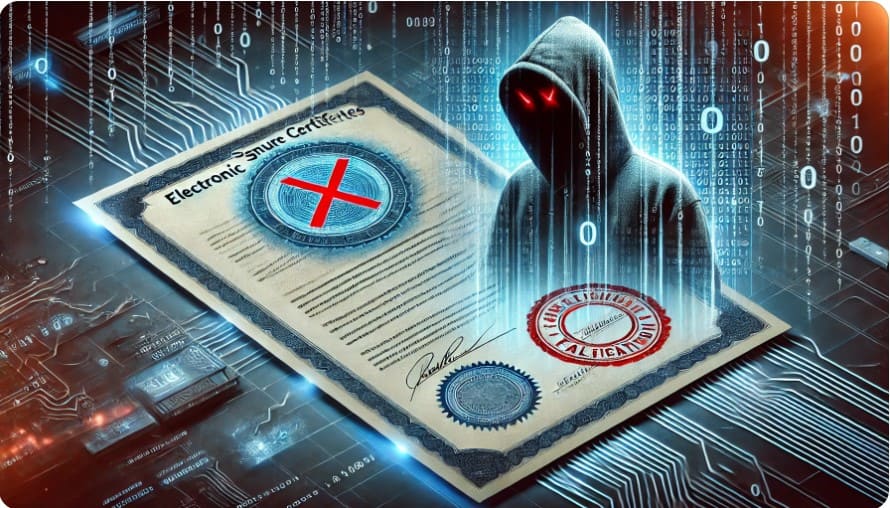The 21st century is regarded as the modern period where the evolution of almost everything has taken place and therefore, new communication systems and digital technologies have made drastic yet dramatic changes in the way we live, a revolution in the way people transact business. Businesses and consumers are increasingly using computers to create, transmit and store information in electronic form instead of traditional paper documents. Electronic signatures are in force due to their authenticity and reliability which makes the work feasible. But misuse of this advancement in technology takes place for committing fraudulent acts.
Table of Contents
Electronic Signature
The idea of The Digital Signature was brought into force by the Information Technology Act, of 2000 in India based on the UNCITRAL Model Law on Electronic Signatures, 2001 which is technologically a neutral concept including a digital signature. [1] Section 2(1)(a) of the IT Act, 2000 states electronic signature means authentication of any electronic record by a subscriber by using the electronic technique specified in the second schedule and includes a digital signature.
The basic features of electronic signature include:
- It is technologically neutral and can be created by attaching a picture of the signature.
- It’s less authentic as it could be easily tampered with.
- It could either be typed, handwritten, attached, fingerprinted or coded.
- It is generally used for the verification of documents.
The signature plays a very important role in all sorts of agreements and transactions; hence it forms concrete evidence. Electronic signatures provide ease in doing online agreements and transactions so it is in use rapidly in the modern world. Electronic signatures provide strong protection for online transactions. Hence, electronic signatures are data or symbols which are jointly combined in digital form and are fixed to the electronically transferred documents to authenticate and simultaneously verify the sender’s identity and his utmost intention regarding the signed document.
Moreover, it is the authentication of any electronic record by a subscriber through the usage of the electronic techniques specified in the Second Schedule of the IT Act 2000.
Thus, the electronic signature is a sort of handwritten classic signature which is basically the representation of a person’s name or surname. Hence the electronic signature just like a handwritten signature is a legally recognized mode of stating the signer’s intent to adhere to the terms of the signed document.
Kinds of Electronic Signature
There are three kinds of electronic signatures –
Simple electronic signature
A Simple Electronic Signature is defined as the data in electronic form which is logically attached with other data in electronic form and simultaneously used by the signatory to sign and is therefore signing a document, sending a scanned copy using an email account, username and password, accepting the terms or the guidelines of a society can constitute a simple signature. So, there is a logical association between the email address and the signature. So, this is the reason why electronic signatures are considered simple as they provide the least level of security in any sort of contract, agreement trtransactionHence, this signature is called an electronic signature.
Reformation and Rehabilitation of Offenders
Advanced electronic signatures
This kind of electronic signature enables the identification of the signers well and allows them to retain control simultaneously. This sort of signature is interconnected to the signed data in such a manner that any subsequent modifications in the data are recognisable. In fact, the advanced electronic signature provides a higher security level than that of simple signatures. Hence this signature is called a digital signature.
Qualified electronic signatures
This kind of electronic signature is an extremely advanced signature that is specifically created by a qualified signature creation device and is grounded on a qualified certificate for electronic signatures which is specially provided by the providers which may be either public or private and which must be granted qualified status by the national competent authority as mentioned in the national “ trusted lists” of the EU member state. Providers will deliver the corresponding private key on a qualified signature creation device of the qualified certificate. Hence this signature is also called Digital Signature.
Electronic Signatures under International Law
Section 106 talks about electronic signatures in the Global and National Commerce Act, and states that an electronic signature for the US law is “an electronic sound, purpose process or logically associated with a contract or other sort of record adopted by a person to sign the record. Further, Section 7 of part II of the Electronic Communications Act, 2000, states that an electronic signature is anything that is in electronic form –
- Which is incorporated or else logically connected with any sort of electronic communication or data.
- Which is signed by the one who purports it to be used.
Offences related to Electronic Records
Section 463 of I.P.C deals with the making of false electronic records or documents to the public to cause injury or fraud to the public or any person entering into a contract to commit fraud. Section 465 of I.P.C deals with the punishment for making any sort of false documents and the punishment is imprisonment for two years or a fine or both. Section 73 of the Information Technology Act states the penalty for publishing false Electronic signature certificates in certain particulars. The main grounds on which the penalty for the same is provided are –
That no person shall publish or make the electronic signature certificate available to any other person with the knowledge that –
- The Certifying Authority mentioned in the certificate has not issued the same or,
- The subscriber mentioned in the certificate has not accepted the same or,
- The certificate has been cancelled or revoked unless such publication is to investigate the digital signature created before such suspension or cancellation.
Any person who contravenes the provisions of subsection (1) would be punished with imprisonment for a term of two years or with a fine which may extend to one lakh rupees or both.
The nature of such an offence is non – non-cognizable, bailable and compoundable but the condition is that if the crime affects the socio-economic conditions or is committed against a child below 18 years or against a woman shall not be compounded.
This offence is investigated by a police officer not below the rank of Inspector, by a Controller. by the officer authorized by the Controller under [5] Section 28 of the Information Technology Act.
The matter for the same is dealt by the Magistrate of the first class and the first appeal sequence lies to the court of session.
The points for prosecution in this offence are as follows-
- The accused published the Electronic Signature Certificate with the knowledge that the certifying Authority mentioned in it had not issued the same.
- The accused had published an Electronic Signature Certificate with the knowledge that the subscriber mentioned in the Certificate had not accepted the same.
- The accused published the certificate with the prior knowledge that the certificate had been suspended or cancelled.
The points for defence are as follows –
- That the act was the result of a mistake or clear negligence and was not at all based on intention or knowledge.
Section 74 of the Information Technology Act mentions publication for fraudulent purposes that is whoever knowingly and intentionally published, creates or otherwise makes available an Electronic Signature Certificate for any unlawful or fraudulent purposes would be punished with imprisonment for a term of a maximum of two years or with fine which may extend to one lakh rupees or even both and the punishment for abetment for this offence is imprisonment up to 2 years or fine up to rupees 1 lakh.
The nature of the offence is an on-cognizable, bailable and compoundable offence but the condition is that the crime must not affect the socio-economic conditions or against a child below 18 years of age or against a woman.
Audi Alteram Partem – Meaning, Essential Elements and Exceptions
Investigative Authority
This offence is investigated by the police officer who shouldn’t be below the rank of inspector, or controller. Any officer authorized by the controller under Section 28 of the Information Technology Act and the matter is dealt with under Magistrate of the first class.
Conclusion
This article is completely focused on imparting brief knowledge about e-signature, its legislation and the penalty for publishing any sort of false e-certificate for fraudulent purposes. Therefore, the author has tried to brief the readers about the same to impart knowledge to readers about the penalties of such fraudulent acts which are being committed virtually and people are not aware of these legislations. So the main aim of this article is to make people are of the consequences of publishing such digital certificates fraudulently. The Indian Government must take the initiative to give awareness to people on a large scale about such fraudulent acts.


Thanks for posting this article. Article was written nicely. it’s full of content and informative too.